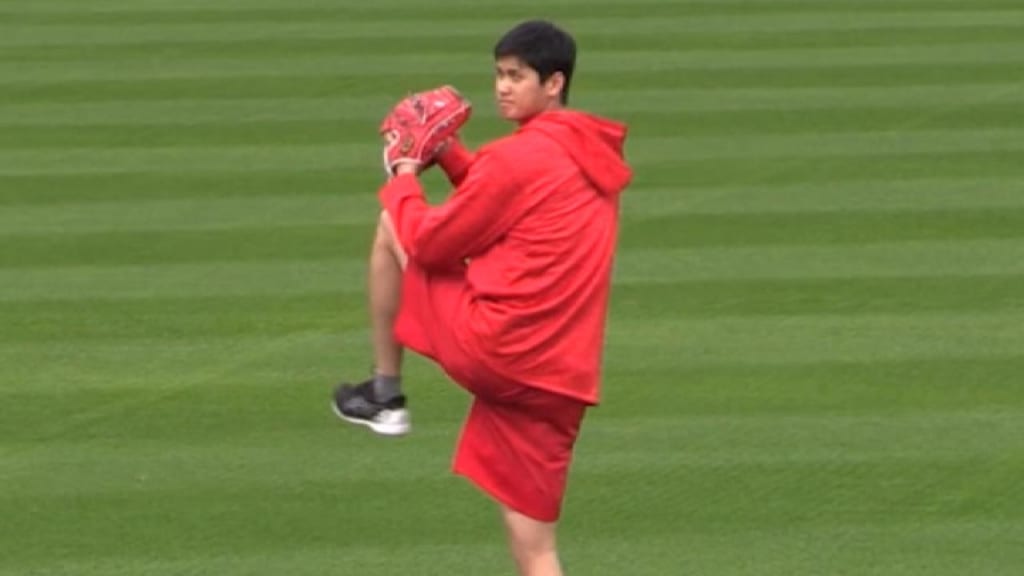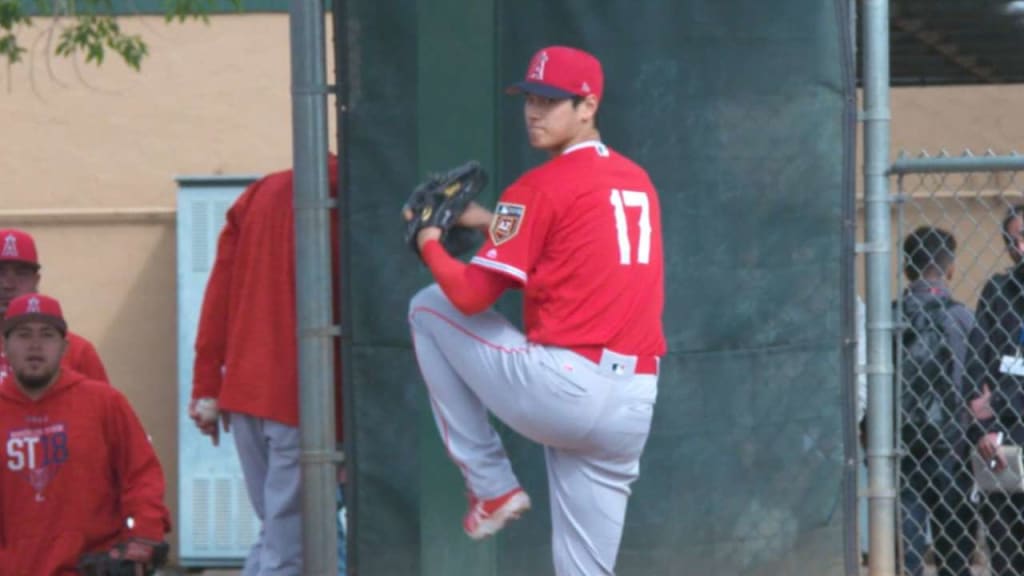Why the Angels' 6-man rotation won't last
This browser does not support the video element.
It is difficult to come up with a more ideal situation for using a six-man rotation than what the Los Angeles Angels currently find themselves in. They have the three major ingredients:
1. They have Shohei Ohtani, the best pitcher coming over from Japan (who was apparently driven all the way from there by Mike Trout in a golf cart), a guy who has spent his entire career pitching with what Major League teams consider an extra day's rest. As the team's primary offseason investment, Ohtani is someone for whom the Angels will want to facilitate the smoothest transition possible.
2. They have no ace, which means going to a six-man rotation won't force them to take starts away from the best pitcher on the team. More to the point: Their ace is Ohtani, the guy inspiring the idea of a six-man rotation in the first place.
3. All their other rotation members are, essentially, the same. The No. 2 pitcher is pretty much the same as the No. 6 pitcher. You neither lose nor gain anything by having any of them throw on any particular day.
This browser does not support the video element.
If you were to invent the scenario that would lead to a team using a six-man rotation all season, this is close to the exact one you'd come up with for Los Angeles. But I'll say it right now: No matter how much they claim they're going to try it, the Angels are not going to end the season with a six-man rotation. No one ever does. I'll be surprised if they make it a month.
The idea of a six-man rotation pops every few years, and in a vacuum, there is some logic to it. Nothing messes with a team's plans more than pitcher injuries, so, theoretically, if you can ease the burden on your starters, you can have them pitch less often. And as starters lose influence in a world of expanded bullpens, de-emphasizing the rotation by adding to it has some appeal as well.
As Angels general manager Billy Eppler told The New York Times last year, "That's been the way the game's been trending, historically, if you look back, if it can help keep guys healthy and you're able to get a little bit more reliability out of your pitchers because of it, I'm all for it."
These stories about six-man rotations are almost always written in the preseason, because they're a battle plan that inevitably evaporates once they come into contact with the enemy: The season itself. The problem with a six-man rotation is obvious: It is difficult enough to come up with five quality starters, and thus exponentially more so to come up with six. What's that old football cliche? If you have two quarterbacks, you have none? If you have six starters, you probably only have five; you just don't know which five yet.
This browser does not support the video element.
Look at the Angels. Their theoretical six starters are:
1. Ohtani
- Garrett Richards
- Andrew Heaney
- Tyler Skaggs
- Matt Shoemaker
- Nick Tropeano, JC Ramirez or Parker Bridwell
Again, this is a situation that would seem to lend itself to a six-man rotation. You have five clear guys; if the Angels had signed, say, Jake Arrieta rather than Ohtani, the rotation would clearly be Arrieta, Richards, Heaney, Skaggs and Shoemaker. Those five are clearly the first five. The sixth spot is a series of question marks that, theoretically, you could use a six-man rotation to figure out. Ramirez is coming off a stem-cell injection in his right elbow; Tropeano missed all last year after Tommy John surgery; Bridwell was surprisingly effective in 2017, but his peripheral stats point to big-time regression. The idea is that you can use that sixth rotation spot as the place for those three to battle it out in a relatively low-stress environment; it is, after all, just the sixth spot.
But that's the thing about baseball: The sixth spot becomes the fifth spot quickly. Only two teams in baseball history have gone through a whole season using only five starters; last year, only one team (Cleveland) used as few as seven. The Twins had 16 pitchers start a game for them in 2017, and they made the playoffs. Before the Angels signed Ohtani, the primary concern for the team was that they didn't have enough starting pitchers. Now, you're asking them to add one more that they didn't have in the first place.
Richards hasn't thrown more than 35 innings since 2015. Skaggs hasn't thrown more than 85 since '14. Shoemaker threw 77 2/3 last year. Heaney has thrown 27 2/3 innings since '15. And those are the guys you're counting on. Those are the five before you get into that sixth spot (and there is little evidence that six-man rotations keep pitchers healthier).
Sure, the Angels have a lot of interchangeable pitchers, guys with talent but lacking reliability; the argument for the six-man rotation has been that you're not costing a dominant pitcher starts. But a six-man rotation is not a hedge against injury; it actually makes injuries more costly. It leaves you one extra hole to fill. And there will be holes to fill.
These are pitchers you cannot rely upon to give you innings, and now you're taking a bullpen spot away by going to a six-man rotation. It's possible that roster spot can be offset by the two-way Ohtani, but with the trade of C.J. Cron, it actually looks like they're culling the roster to use Ohtani more, not less. You lose some of that positional flexibility if Ohtani is now playing nearly every day. They're going to need to dig into that bullpen regularly, and now they have one fewer roster spot with which to do it.
For all the talk of a six-man rotation potentially being the future, an argument could be made in the opposite direction: It might make more sense, in an age where starters are less valuable and less workmanlike than in the past, to go to a four-man rotation. Get four guys who can get you through the lineup twice and then hand it over to a deep and specialized bullpen.
Many studies have argued that the primary cause of pitcher injury isn't lack of rest between uses; it's overuse on the days they do pitch. If you only ask a guy to give you four or five innings every four days, rather than six or seven every five, you could, theoretically, concentrate on finding a team of swingmen and specialists. It could be easier than finding six quality starting pitchers, or maybe even five.
Either way, a six-man rotation sounds like a wonderful idea in the lab but is highly likely to implode when exposed to the elements. Look, the Angels need to figure out a way to work Ohtani into their staff, and there are ways to do it; Fangraphs' Craig Edwards argued last week that thanks to the number of off-days, roughly two-thirds of Ohtani's starts could be made on five days' rest. But the answer to the Ohtani problem isn't to require the Halos find five other starting pitchers. They'll be lucky to find four. I'm not sure even sure they have three.
What is almost certainly going to happen is that one of the Angels' starters will blow a gasket, and Mike Scioscia, a generally conventional manager anyway, will shrug, say he tried and go right back to the five-man rotation he, and everybody else, is used to. The Halos say they're really going to try this. I've heard that before. I'll believe it when I see it.

